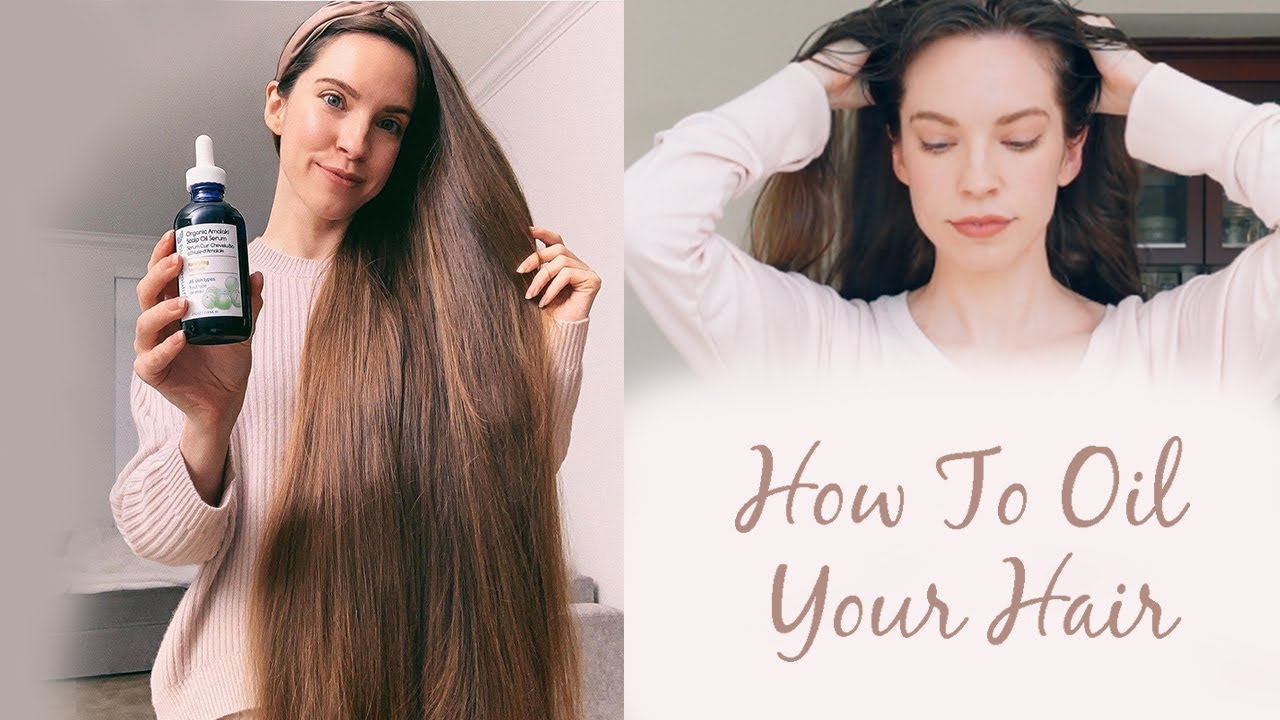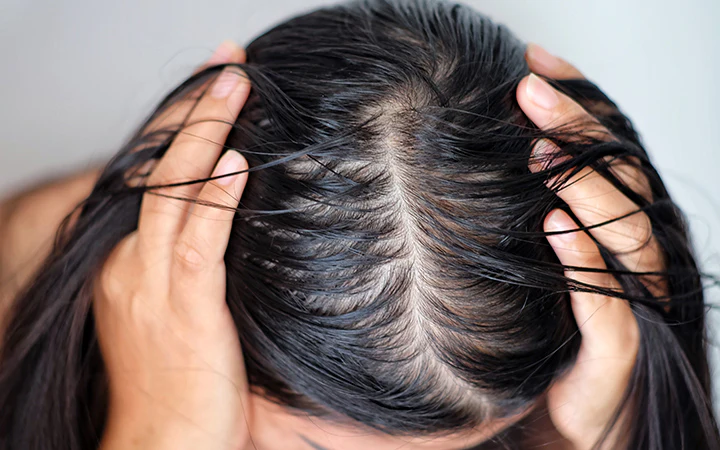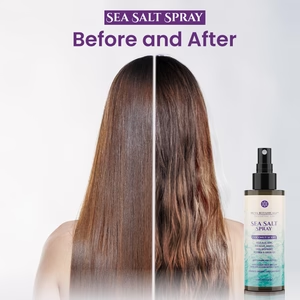Are you tired of dealing with frizzy, dull, or damaged hair? Look no further – the ultimate hair hack is here! Introducing hair oil – the secret weapon to achieving gorgeous and healthy locks. Incorporating hair oil into your routine can work wonders if you have dry, oily, or normal hair.
This comprehensive guide will delve into everything you need to know about when and how to use hair oil effectively. We’ll cover everything from the benefits of hair oil to choosing the right type for your hair.
Discover the best times to apply hair oil to achieve maximum results and learn the techniques for proper application. Plus, we’ll explore the wide range of hair oils available today so that you can make an informed choice based on your unique hair needs.
Say goodbye to bad hair days and hello to luscious, healthy locks. Get ready for the ultimate hair transformation with our expert tips and tricks on using hair oil effectively. Don’t miss out – read on to unlock the secret to gorgeous hair!
Different types of hair oil and their properties
Hair oils come in a wide variety of types, each with its unique properties and benefits. Understanding the different types of hair oils and their characteristics can help you decide when choosing the right one for your hair.
One of the most popular types of hair oil is coconut oil. Coconut oil is known for its intense moisturizing properties, making it an excellent choice for dry, damaged, or frizzy hair. It is also rich in lauric acid, which has antimicrobial and anti-inflammatory properties, making it beneficial for scalp health. Coconut oil can penetrate deep into the hair shaft, helping to repair and strengthen the hair from within.
Another popular option is argan oil, often called “liquid gold” for its numerous benefits. Argan oil is rich in fatty acids, antioxidants, and vitamin E, making it an excellent choice for nourishing and protecting the hair. It can help to reduce frizz, add shine, and improve the overall health and appearance of the hair.
Olive oil is another versatile hair oil that has been used for centuries. It is rich in monounsaturated fatty acids and antioxidants, which can help to moisturize and strengthen the hair. Olive oil is particularly beneficial for those with dry or damaged hair, as it can help to restore the hair’s natural lustre and shine.
Understanding your hair type and its specific needs
Before choosing the right hair oil for your needs, it’s essential to understand your hair type and its particular needs. Hair types can range from delicate and straight to coarse and curly, and each type has unique characteristics and requirements.
If you have fine or thin hair, opt for a lightweight oil, such as jojoba or grapeseed oil. These oils can help to add shine and moisture without weighing down your hair. On the other hand, if you have thick, coarse, or curly hair, you may benefit from a heavier oil, such as castor or Moroccan argan oil, which can help to tame frizz and add definition.
If you have dry or damaged hair, look for an oil rich in nourishing ingredients, such as shea butter or vitamin E. These oils can help to deeply moisturize and repair the hair, leaving it feeling soft, smooth, and healthy.
If you have oily hair or a greasy scalp, avoid heavy, occlusive oils and instead opt for a lighter, non-comedogenic oil, such as grapeseed or sunflower oil. These oils can help to balance sebum production without clogging pores or weighing down the hair.
When to use hair oil: pre-wash, post-wash, or overnight
The timing of when you use hair oil can also significantly impact its effectiveness. There are several ways to incorporate hair oil into your hair care routine, and the best approach will depend on your specific hair type and needs.
One popular way to use hair oil is as a pre-wash treatment. Applying hair oil before shampooing can help to nourish and protect the hair, preventing it from becoming too stripped or dried out during the washing process. This is particularly beneficial for those with dry or damaged hair, as the oil can help to lock in moisture and prevent further breakage.
Another option is to use hair oil as a post-wash treatment. After washing and conditioning your hair, you can apply a small amount of oil to the ends or throughout the length of your hair. This can help seal moisture, add shine, and tame frizz. This approach is particularly beneficial for those with normal to oily hair, as it can help to balance the hair’s natural oils without weighing it down.
Finally, you can also use hair oil as an overnight treatment. Applying a generous amount of oil to your hair and leaving it on overnight can help to deeply nourish and condition the hair, providing intense hydration and repair. This is an excellent option for those with severely dry, damaged, or brittle hair, as it can help to restore the hair’s natural health and vitality.
How to apply hair oil correctly for maximum effectiveness
Applying hair oil correctly is crucial to achieving the best results. Here are some tips for applying hair oil effectively:
Start with a small amount of oil and work your way up. Applying too much hair oil is easy, leaving your hair feeling greasy and weighed down. Begin with a few drops or a small oil pump and work it through your hair, starting at the ends and up to the roots.
Focus on the ends:
The ends of your hair are the oldest and most prone to dryness and damage, so be sure to pay extra attention to this area when applying hair oil. Concentrate most of the oil on the lower half to two-thirds of your hair.
Use the proper technique:
When applying hair oil, use a gentle, massaging motion to work the oil into your hair and scalp. Avoid rubbing or tugging, as this can cause breakage and damage.
Distribute the oil evenly:
Distribute the oil evenly throughout your hair, from root to tip. This will help to ensure that all of your hair receives the benefits of the oil.
DIY hair oil recipes for different hair concerns
In addition to the wide range of commercially available hair oils, you can create custom blends to target specific hair concerns. Here are a few DIY hair oil recipes to consider:
For dry, damaged hair:
Combine equal parts of argan, coconut, and jojoba. The argan oil will nourish and repair the hair, the coconut oil will provide deep hydration, and the jojoba oil will help to balance sebum production.
Mix equal parts of Moroccan argan, avocado, and rosemary essential oil for frizzy, unruly hair. The argan oil will help to tame frizz, the avocado oil will add shine and softness, and the rosemary essential oil will stimulate the scalp and promote healthy hair growth.
For oily, greasy hair:
Blend equal parts of grapeseed, tea tree, and peppermint essential oil. Grapeseed oil is lightweight and non-comedogenic, tea tree oil has natural purifying properties, and peppermint oil can help soothe and balance the scalp.
For thin, weak hair:
Combine equal parts of castor oil, pumpkin seed oil, and biotin-rich oil (such as wheat germ or sweet almond oil). Castor oil can help stimulate hair growth, the pumpkin seed oil is rich in nutrients that support healthy hair, and biotin-rich oil strengthens and fortifies the hair.
Common mistakes to avoid when using hair oil:
While hair oil can be a powerful tool for achieving gorgeous, healthy hair, people also make some common mistakes when using it. Here are a few to avoid:
Applying too much oil: As mentioned earlier, it’s easy to use too much hair oil, which can lead to a greasy, weighed-down appearance. Start with a small amount and gradually increase as needed.
Neglecting the scalp:
Many people focus solely on applying hair oil to the ends of their hair, but it’s essential also to massage it into the scalp. This can help to nourish the roots and promote healthy hair growth.
Using the wrong oil for your hair type:
Not all hair oils are created equal, and choosing one suitable for your specific hair type and needs is essential. Oily hair types should avoid heavy, occlusive oils, while dry hair should opt for more nourishing, moisturizing oils.
Failing to distribute the oil properly:
If you don’t distribute the oil evenly throughout your hair, you may end up with some overly oily areas and others still dry and brittle.
Choosing the right hair oil for your hair type
With so many hair oils on the market, choosing the right one for your hair type and needs can be overwhelming. Here are some tips to help you make the best selection:
For fine, thin hair: Look for lightweight, non-greasy oils like argan, jojoba, or grapeseed oil. These will add shine and moisture without weighing down your hair.
For thick, coarse hair:
Opt for heavier, more nourishing oils like coconut, Moroccan argan, or castor oil. These will help to tame frizz and add definition to your hair.
For dry, damaged hair:
Choose oils rich in fatty acids and antioxidants, such as avocado, marula, or baobab oil. These will help to hydrate and repair your hair deeply.
For oily, greasy hair:
Look for lightweight, non-comedogenic oils like grapeseed, sunflower, or tea tree oil. These will help to balance sebum production without clogging pores.
Hair oil brands and products to consider:
Countless hair oil brands and products are on the market, each with unique formulations and benefits. Here are some top-rated options to consider:
Moroccan Argan Oil by Josie Maran:
This 100% pure, organic argan oil is rich in fatty acids and antioxidants, making it an excellent choice for nourishing and repairing dry, damaged hair.
Coconut Oil by Viva Naturals:
This unrefined, cold-pressed coconut oil is a versatile option that can be used for everything from deep conditioning to scalp massages.
Marula Oil by The Ordinary:
This lightweight, fast-absorbing oil is packed with fatty acids and vitamin C, making it an excellent choice for those with fine or oily hair.
Baobab Oil by Radha Beauty:
It is rich in antioxidants and omega fatty acids, making it an excellent choice for curly, coy, or frizzy hair.
Conclusion: The role of hair oil in maintaining gorgeous, healthy hair
In conclusion, hair oil is a powerful tool for achieving and maintaining gorgeous, healthy hair. By understanding the different types of hair oils and their properties, as well as your hair type and needs, you can choose the right oil for your specific hair concerns.
Whether you use hair oil as a pre-wash treatment, a post-wash styling product, or an overnight deep conditioning treatment, the key is to apply it correctly and consistently. With the right hair oil and application techniques, you can say goodbye to frizzy, dull, or damaged hair and hello to luscious, healthy locks.
Remember, hair oil is not a one-size-fits-all solution – it’s essential to experiment and find the right formula for your unique hair type and needs. But with the tips and recommendations in this guide, you’re well on your way to unlocking the secret to gorgeous, healthy hair.
So, what are you waiting for? Incorporate hair oil into your hair care routine today and experience the transformative power of this versatile beauty essential.



